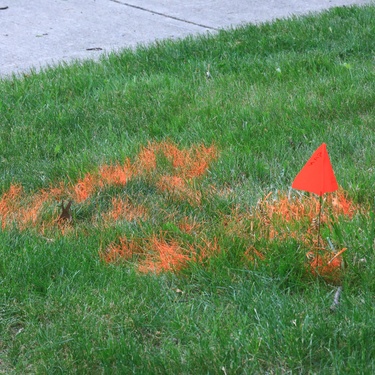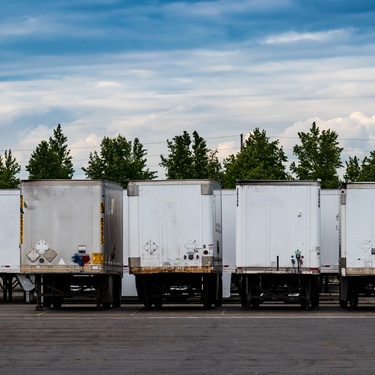
Whether you’re managing a professional construction project or just digging on your property, you must understand what lies beneath the surface. This is where underground utility labeling comes in. Professional locators mark buried service lines with flags, and in this guide, we’ll explain what each color flag means for underground utility labeling.
When and Where You Need Underground Utility Labeling
Before we dive into the color coding, it’s important to understand the why of underground utility marking. For residential and commercial projects, you need to locate underground utilities before digging to ensure the safety and efficiency of your work.
The consequences of ignoring utility marking extend far beyond project delays. Striking a gas line can trigger explosions, while hitting electrical cables can cause electrocution or widespread power outages.
The APWA Color Code System
The American Public Works Association (APWA) utilizes a standard color-coding system for crews' use. This system creates consistency across different regions and utility companies, ensuring that a red mark means the same thing whether you're digging in California or Connecticut. The system covers eight primary colors, each representing different types of underground infrastructure that excavators commonly encounter, but we’ll cover the five most common ones.
Red for Electrical Lines
Red indicates electrical power lines, transformers, and other equipment. These markings warn of potentially lethal voltages that can cause immediate death or severe injury.
Power lines carry thousands of volts, making them among the most dangerous utilities to strike accidentally. Workers must maintain safe distances from red-marked areas and use non-conductive tools when working nearby.
Yellow for Gas and Petroleum Lines
Yellow markings designate natural gas, propane, and petroleum pipelines. These lines pose explosion and fire risks, making them extremely hazardous to construction crews and nearby residents. Gas companies typically respond quickly to yellow line locations since even minor damage can create emergencies.
Orange for Telecommunications Infrastructure
Orange identifies telephone, cable television, internet, and fiber optic lines in the color guide to underground utility labeling. While these rarely pose immediate safety risks, damage can disrupt communications for thousands of customers and result in expensive repair bills. Telecommunications companies often bundle multiple services in a single conduit, meaning one strike can affect phone, internet, and television service simultaneously.
Blue for Water Systems
Blue marks potable water lines, including main distribution pipes and service connections to individual properties. Damage to these lines can contaminate drinking water supplies and create significant flooding problems. Water line repairs can require street closures and take days to complete, so striking one can mean a hefty price tag.
Green for Sewer and Drainage
Green markings identify sewer lines, storm drains, and other wastewater systems. Damaging such utilities could create environmental hazards and require expensive cleanup operations. Sewer line strikes require immediate attention to prevent contamination of the surrounding soil and groundwater.
Protecting Infrastructure Through Proper Planning
Understanding utility color codes is just the start of safe excavation. Successful projects rely on careful planning, clear communication, and respecting marked boundaries. Utility markings are typically valid for 30 days, so projects lasting longer require updated requests to maintain accuracy and compliance.
Bio: Casey is a passionate copyeditor highly motivated to provide compelling SEO content in the digital marketing space. Her expertise includes a vast range of industries from highly technical, consumer, and lifestyle-based, with an emphasis on attention to detail and readability.




















